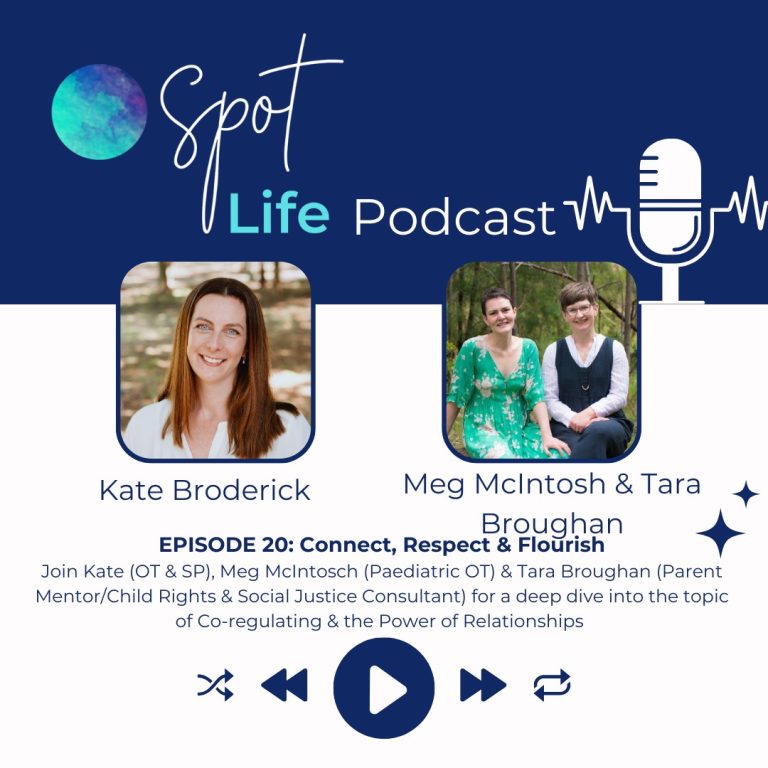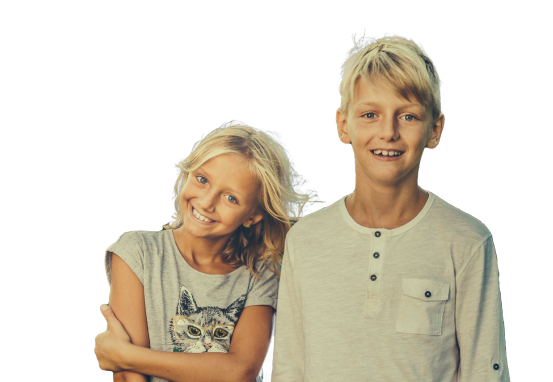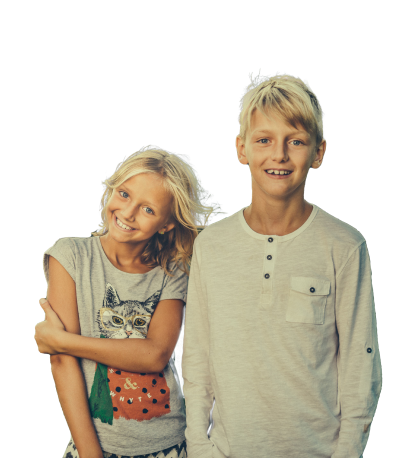

Join Kate (Dual Qualified OT and Speechie), Med McIntosch (Paediatric OT) & Tara Broughan (Parent Mentor/Child Rights & Social Justice Consultant) for a deep dive into the topic of Co-Regulation & the power of Relationships in transforming family life in our contemporary life.
Tara and Meg met through their children last year. They discovered that they both had an intense passion for supporting children and their families in the community. Through their recent but strong friendship, Tara and Meg have created a website (www.megandtara.com) which has a variety of resources including online courses, aimed at supporting children and their families.
Meg is a mother of 2 and an OT that has been working in the neurodiverse field for around 10 years. Meg’s interest in neuroscience and neurobiology led her to a post graduate certificate in Ayres Sensory Integration. With the significant shift to online services in the past year, Meg transitioned to online parent training and focused on co-regulation and emotional coaching.
Tara has always had an interest in people having a voice. She has spent 10 years working in human rights, specialising in children’s rights. Her career has focused on asking questions such as ‘who decided that?’, ‘what’s their agenda?’, ‘why do we have to fit this particular version of normal?’ and ‘how do we create societies and health services that actually respond to the individuals?’.
A lot of parents feel they are in service to their children. They feed them, pay the rent, do all the things that they can to support their children and to keep them safe, especially if they have additional needs. Because of this demand to be responsive, parents can feel they are constantly in service. That can leave parents feeling that their children have a lot of power in their lives. But actually, children don’t have much power in society at all. What they do, how they do it, where they spend their time, what they’re able to do, what they eat, is actually decided by the adults all the time!
It is important to look at how we include the children’s voices, experiences and wisdom. Children are the experts of their own experiences and childhood, not the parent. So how do we bring their voices into all their experiences, especially if they have vulnerabilities?
It is really important that people are consciously and actively thinking about these issues as we all have a responsibility for children.
Co-regulaiton is essentially regulating our nervous system and holding space so we can connect with our children’s nervous system (even some adults have difficulty with this!). Children need an adult body, brain and nervous system to help them regulate those big and small emotions. This experience is completely unique to each child. Different people need different responses. For example, one child might prefer tight hugs while another might want personal space when they are upset. It’s all about getting to know your child and to show empathy.
Co-regulation is about maintaining or trying to bring a child’s anxious/ overstimulated (in whatever way and for whatever reason) nervous systems down to a window of tolerance where they are capable of figuring out how to interact with the world around them. This is achieved through consistent co-regulation.
‘It is regulation through a relationship.’
No-one is regulating independent of a relationship. Nervous systems respond to each other. For example, if one person’s emotions are heightened, you may respond with a more heightened state. We naturally meet and respond to each other in relationship. Children need even more support to do that regulating. Through a safe, trusting and caring relationship, children can express themselves. Their bodies mirror our bodies so modelling behaviour and emotions are essential in co-regulation.
Adults need to be able to co-regulate as well. We might be able to regulate on our own, but occasionally we need other people to help us to do that. Children respond to our nervous systems and any underlying stressors. This is why it is so important that parents are able to regulate themselves.
Self-regulation for all children, particularly those under the age of 8, are neurodiverse or have sensory over-responsiveness – is an unrealistic goal. No 3 or 6 year old can self-regulate consistently. Even adults in stressful situations cannot self-regulate consistently. The goal should instead be to support families so that they can problem-solve, set up the environment and provide activities that will calm a nervous system. It is not a child’s responsibility to self-regulate.
As adults we show dys-regulation just like children do, we become angry and we yell. We can behave in ways that are not the best reaction to certain situations. When it comes to the different way we regulate – the context is important. As adults we are able to empathise well. We use the tool of emotion coaching – the capacity to not just run through the motions, but to really figure out the language of a child. We help them feel heard, understand the felt experience in their body and brain so that ‘WE GET IT’. “I get it, I get that you’re really upset, I get that it is really frustrated to do an online class, I get that it feels horrible when a friend doesn’t talk to you and I get how it feels when you don’t get the cupcake you want.”
We can mirror others and really sit in our bodies and feel the emotions. Sometimes, we neglect looking at our own bodies and don’t experience how we actually feel. We end up pushing aside or pushing out our needs instead of just being with the child. Always think about – how can we meet the child at their level and show them with our body that we know how they are feeling, and to let them feel us.
Adults are the emotion coaches who also look out for context. How does my child regulate? What do they need in their day? What are the ways we can play with power and body movement?
At the end of the day – children have all this energy that needs to be processed. Kids need to move before they can settle and good ideas are playing big body games or having sensory input as a family. This is also an important connection time that allows the child to interact and regulate with their loved ones. Fun activities include throwing big cushions and wrestling on the bed. Let the child win as this allows them to experience a reversal in power, which enables then to experience overcoming new emotions with you.
Being out in nature is another good idea. Children will use nature and connect with others to regulate.
With older children, the minute their parents hold space and stops reacting to what’s going on with the child and their emotions, it becomes a very foreign and confusing experience. Some children feel safer to have a predictable response from their parents, rather than having big changes in the environment. The main goal is to be there for the child and hold space for their emotions – even if it feels awkward and silly! It’s really different from what the parent normally does and as you practice, your child begins to understand that they have been heard. They don’t have to escalate to be heard as their parent is actually listening. Everything settles down much quicker.
Find that shared language as each child will need something different from you. Parents should not to be scared to experiment wildly. A child might not want you to touch them but if you assume the same body position as them or crawl under a blanket with them, curl up under a table and just sit with them – you might be surprised at the results. If it doesn’t go well, give them space again. Often when we go up to a child, we arrive at an adult level. If their body and brain is in a fight or flight state, they will more likely perceive you as a threat. So, it is always good to make your body as small as possible and bring yourself down to the floor onto their level. In this way your emotion coaching won’t feel as a threat but can help them to co-regulate.
This depends on what your child is doing. If your child is upset and refusing to come out of their room, it is okay that they don’t want to open the door. Don’t push the boundary because they are asking for some space. Instead, sit outside the door and say “I’m here for you and I just want you to know I’m here when you’re ready”. After waiting for a little while, say “I’m still here” until the situation deescalates enough for consent.
Consent is a very useful tool in relationships with children when you want to have proactive conversations. Even in the midst of big expressions of emotions, you can say “I’d really love to come in and talk to you, would that be okay?”. You want to be this kind of responsive. Going away, but staying close respect’s the child’s boundary but also shows you are available. You want to let your child know that you understand that this is a really big issue for them and that you are there for them to have this conversation to help each other regulate, when they are ready.
Always focus on the expression of the emotion before we talk about behaviour. We tend to focus on the lesson we want to teach them such as not hitting a sibling or not screaming in protest. However, until the child feels that their reason for their expression is heard, they will not open up to a conversation. We can set up boundaries (e.g. no hitting) but then we need to respond to the emotion first – “you are angry that I removed you from that situation, you didn’t want me to pick you up, I can hear you are very angry right now”. Validate their emotions all the way with no conversation about the behaviour until their nervous systems are regulated and they are safe.
Find the way to reconnect first and then work on behaviour. It does not mean you don’t ever have the conversation about the behaviour – but that is a separate conversation. This is because instruction given in those moments are often more about us than it is about the child. It is about us wanting to tell the child that they were naughty or what they did was wrong. We want to regulate them first because when they are dysregulated – no one is learning or listening to you, they are not able to!
Anxiety is a really uncomfortable emotion. There is also a culture that resilience is built by pushing through and toughening up. However, for kids with anxiety, we want to hold space for them. For example if your child says “I really don’t want to go to school” we want to make space for them and say “It’s really hard to go to school today, I hear you it’s really really really hard, you’re worried, you don’t like maths”. We’re not trying to change how they are feeling, but rather aim to sit with them in that moment and to talk about it. It is about making a decision that works for the family. The conclusion might be to take a day off work, or if you have to work, then you are still holding space and moving them through the emotions and finding a way to support them such as talking to the teacher so that they are handed over to school in a safe way. You will need to support the carer who you’re handing over to so they too can hold space for the child.
By holding space and not freaking out ourselves and becoming anxious or worked up to fix it, we are teaching the child that while the situation is really uncomfortable, we can still move through the world with anxiety. Those feelings might go away for a bit, and they may return depending on the circumstances. We might have to take it with us to do things we enjoy and sometimes it might go away. Some people need intense therapy their whole life but they can still function quite well. Some don’t have much anxiety at all, or at least don’t feel like they do. It is really an individual thing. When it is too uncomfortable, children sometimes express it through aggression or sadness. It is really important that we support them to feel their bodies, notice their feelings and know that they can still be okay even if they are uncomfortable.
Something else we can do is to give the child opportunities for success. These successes may be smaller than what you might anticipate. For example, for children refusing to go to school, the goal can be to participate in one online class and then let them feel that success. When the child finds success, don’t add on to the demand, such as adding on another lesson. Let them feel that success. If you are focusing particularly on one thing, lower the demands in other areas. Let it be a slow build-up of having that anxious feeling when we’re doing difficult things.
There is a lot of fear around children falling behind at school. This is a natural worry, as we are responding to all the projected goals of the future. What happens is that when a child feels anxiety and says “I don’t want to go to school”, the parent goes into fight or flight themselves. What they need to do is to first regulate themselves and communicate with their child – “it’s really hard but I am here for you”. You can regulate your and your child’s nervous system together.
Covid has been a big stress on all families – both parents and children. As parents, we need to look after ourselves in order to properly model repair and model regulation. If you’re having a really bad day and don’t end up responding in the best way to your child – it is ok. You just need to go back to your child and say sorry. Tell them how you were and are feeling, share that you had a really tough day at work and that it was really stressful. Of course, pitch it at your child’s developmental level. Also talk about what you needed to do to regulate and calm down. Model these strategies, don’t just talk about them. For example, show them that you’re taking a deep breath or going for a walk. It is always more effective to do it yourself in front of them, modelling, than just asking them to do it, or asking them to do it in the moment.
Most importantly, don’t feel bad when you’re not able to keep it together. See it as a learning opportunity for both of yourself and the child. Don’t be afraid of saying sorry.
Self-care is family care. We have a society that is very much focused on productivity and any alone time is a special time for us. By investing in the things that help you regulate, you are delivering the biggest act of service you can offer your family. When you are regulated, you will have the capacity, for the rest of the day, to respond to them in a connected and regulated way.
There is no prescription on self-regulation. It could be yoga, meditation, running or just standing out the back with a cup of tea (lock the door and ask to not be interrupted for the next 10 minutes). Do something that’s going to help you get back in your body to regulate. Everyone in the family should be able to have those times to regulate. It is important to make it a priority because during this lockdown period, statistics show that there’s an increase in collective stress. This pandemic isn’t a normal experience, and it’s a reasonable and appropriate response to feel like we don’t have enough capacity. We are more likely to be anxious, feeling flat and having low motivation levels. In the same way we want to hold a space for children, we need to hold it for ourselves.
To find out more about our amazing guests, check out their:
Instagram: MegandTara
Website: www.megandtara.com (you’ll find a free to download Parenting Guide)
To find out more about this topic, speak to our Occupational Therapy team at Spot Therapy Hub – spottherapyhub@gmail.com or (02) 9326 6000.

